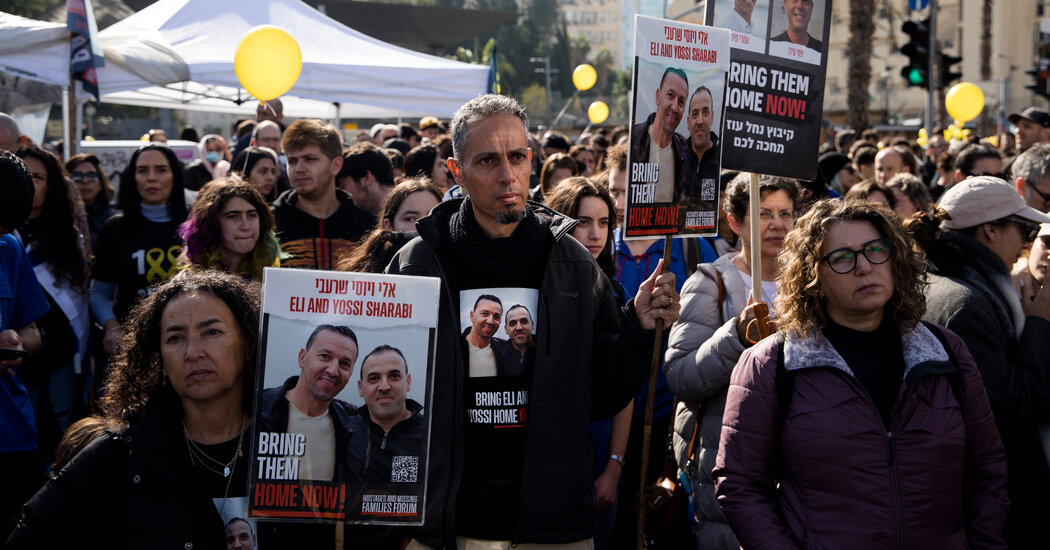Hamas said on Monday that two of the hostages captured on Oct. 7 had been killed in Israeli airstrikes and released images that appeared to show their bodies, but the Israeli military cast doubt on the claim.
Rear Adm. Daniel Hagari, chief spokesman for the Israeli military, said at a press briefing that at least one of the hostages was not killed by its forces. “That’s a Hamas lie,” he said. He did not address the fate of the other hostage.
“We are investigating the event and its circumstances, examining the images distributed by Hamas, alongside additional information at our disposal,” he added.
The claim of the hostages’ deaths, in a video released by Hamas’s military wing, came after two taunting messages from the group promising news on Monday about the fate of three hostages — the two it later said were killed, and a third it said was injured.
A senior adviser to Prime Minister Benjamin Netanyahu of Israel declined to comment on the video, but the Israeli government has condemned such messages as psychological warfare.
The video included clips, apparently recorded earlier, of the two hostages who it claimed were killed, Yossi Sharabi, 53, and Itai Svirsky, 38, speaking while looking into a video camera, and then showed video apparently showing their bodies. It included narration by the hostage who reportedly survived, Noa Argamani, 26, who told of her companions’ deaths and described being wounded, herself.
It was not possible to determine when or where any scenes in the video were recorded.
Admiral Hagari, while not confirming the deaths, said that “in recent days,” the military had met with the men’s families “and expressed grave concern for their fate, due to information available to us.”
A previous video, released on Sunday, showed the three hostages identifying themselves by name and age, and ended with a caption that read: “Tomorrow we will inform you of their fate.”
Another video, released early Monday, featured headshots of the three hostages and said, “Tonight we will inform you of their fate.”
The videos appeared designed to taunt Israelis desperate for news of the hostages and to ratchet up pressure on the Israeli government to make concessions to secure their release. At the same time, the videos appeared to demonstrate the leverage which Hamas can exert on Israeli society through the hostages.
In a third video that announced the two deaths, Ms. Argamani addressed a camera while seated against a white background. It was not possible to determine whether she was speaking from a script that had been prepared for her; Mia Schem, a hostage released in late November, has said that Hamas dictated to her what to say for a video that was published in October.
Previous videos released by Hamas about the hostages have omitted or distorted crucial details.
Rights groups and international law experts say that any hostage video is, by definition, made under duress, and can constitute a war crime.
In the last of the three videos, Ms. Argamani said that she had been in a building with the two others when it was hit by three missiles fired by an Israeli warplane, with two exploding and burying them under rubble. She said that Hamas fighters dug her and Mr. Svirsky out but that Mr. Sharabi had been killed. She did not say when the attack happened.
She said that two nights later, she and Mr. Svirsky had been relocated to another location. En route, Mr. Svirsky was killed by an Israeli strike, she said, and she received shrapnel wounds to her head and body. The video ended with images of what appeared to be the two men’s dead bodies lying on white sheets.
Admiral Hagari later said that Mr. Svirsky had not been hit by Israeli forces.
“The building where they were being held was not a target, and it was not struck by our forces,” he said. “We did not know their real-time location; we do not strike in places where we know there may be hostages. In hindsight, we know we struck targets near to the location where they were being held.”

